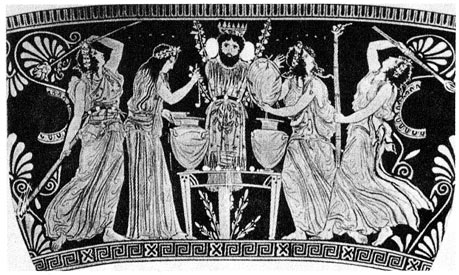
Contents
Overview
Restructuring Is Enabled by Loose Association Binding
The Splitting of Representation and Referent Layers
The Moving Control-Agent as Mental Construct
Religious Effects of Salvia Divinorum
Myth Describes Dissociative Phenomena
Mental constructs are dynamic association matrixes of mental representations, held together by some degree of binding intensity. Ordinary-state cognition is settled and immersed in standard ruts of patterns and mental associations, such as trying to improvise on a musical instrument but ending up playing repeated patterns. Having a recognizable personality relies on such habitual patterns of dynamic mental construct associations, which are somewhat dynamic, but are restricted to a characteristic mode. Behind their mask of habit-based, pseudo-separate agency, everyone is Dionysus (that is, the ultimate control-source).
Entheogens cause their various phenomenological effects by loosening cognitive associations, which causes mental construct processing to be revealed as artificial representationalism and projection.

Ecstatic maenads mix visionary plants into wine in a wine-mixing bowl in front of a column and mask. The mask of Dionysus represents the illusory nature of a person's autonomous control-agency. The column behind the mask represents the timeless frozen block-universe that gives rise to the illusion of the individual person as an independent control-agent.
Revolutionary conversion to a new theory or world-model involves structural transformation of concept networks and hierarchies, increased explanatory coherence, concept recombination, and rational mechanisms of paradigm conversion. The dissociative cognitive state loosens the mind’s associative binding, enabling deep revision of the interconnections between mental constructs.
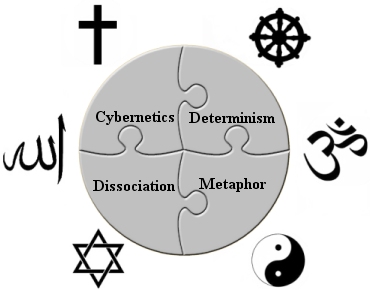
Religion and myth are about dissociative-state experience, frozen-time determinism, self-control cybernetics, and metaphorical description of these. In intense primary religious experiencing, the mental model of self and world undergoes a standard, pre-configured expansion and transformation. The religiously transformed mental model takes into account the representational nature of experience, the experience of embeddedness in timeless unity, and the limited and dependent nature of self-control agency. This religious mental-model transformation is assisted by metaphors that describe these experiential insights in a pictorial form that is easy for the mind to retain.
Like the egoic cognitive structure, the transcendent mental model is an innate, pre-configured structure that is discovered and revealed, like the adolescent discovers the innate ability to climax. The ability to mystically climax is inbuilt, as is the mental model that is revealed, although the useful metaphors and systematic explanation that are necessary to retain the revealed mental structure must be a product of human effort.
Salvia divinorum causes metaperception, which is the tangible perception of the layer of mental constructs that is the only thing directly presented to awareness. In the dissociative state, the vantage-point of awareness is raised, or stepped back a level, resulting in perceiving the cognitive workings of mental-construct processing and perception itself.
Mental constructs that are usually tightly associated separate from each other. The mental representation of each item also perceptibly separates from the represented referent; representations split into two perceptibly distinct layers. The representation layer is present to awareness like a tangible painting, while the referent layer is a remote, speculative realm that is pointed to but is perceptually absent, like a foreign country one has never directly seen.
A person lives their entire subjectively experienced life inside a simulation that their own mind produces by presenting mental constructs to awareness. In metaperception, personal control-power and personal movement through space and time appear as synthetic mental constructs.
In the ordinary cognitive state, the mind generates the sensation of being an autonomous egoic agent wielding cross-time control-power while moving through time and space; this sensation is a projected, constructed, synthetic image and perspective.
The ego-entity exists as a real set of patterns and dynamics spread across time, but the ego is not solid, continuous, or autonomously powerful in the way the mind originally imagines. The self exists as a mental construct in the form of a time-slice series. This mental construct exists both as the entire series and as individual time-slices, with the continuant agent’s motion and control-power mentally projected from within each time-slice.
Seeing the illusory aspects of mental representation of oneself, and feeling static spacetime unity in the absence of the accustomed sense of personal solidity, can be experienced as death. This death-experience is the ending of personal existence, because the egoic-mode mind identifies one’s existence with the projected image and sensation of the moving continuant agent and its control-power.
Salvia divinorum is an ergonomic means of religious revelation and transformative, initiatory mental-model regeneration. Salvia produces fewer bodily effects than LSD; Salvia doesn't cause trembling, pupil dilation, temperature swing, or heart palpitation, as LSD does. The reduction of bodily effects, along with controllable dosage and short duration, makes Salvia ideal for studying cognitive dynamics about time, will, and control, including the nature of personal control agency. When Salvia is combined with understanding this model of ego death, one can be immediately and straightforwardly initiated into transcendent self-knowledge.
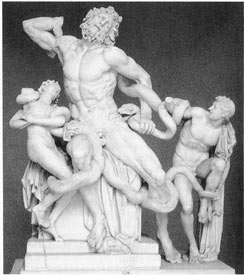
Salvia can cause intense undulation of vision and of the mental body-image similar to Laokoon, the seer and priest of Apollo, who was wrapped by the two serpents of Apollo and wrestled with them to his death. Perceptual undulation is also depicted in Jonah’s prayer in the whale, with the currents, waves, and breakers swirling around him and threatening to engulf him with turbulent waters, with seaweed wrapped around his head; and Medusa, with snakes moving around her head. The material plane itself, including one’s mental body-image, seems to undulate, not just one’s visual perception of it.
Compared to mushrooms, Salvia produces less visual and auditory distortion such as color smearing, blurring, surface waving, bending, tracers, and audio warbling. Salvia causes sensations of explicit representationalism, frozen timelessness, spacetime embeddedness and spatial merging, and inability to control and steer one’s thoughts. Awareness seems to sit still while thoughts arrive, presented and given to disempowered, passive awareness.
Because of the short duration of smoked Salvia, there isn’t the experience of a “voyage”, “long trip that plays out”, and “epic journey”. However, as with the longer-lasting entheogens, the same classic theme can occur: “There’s no turning away from any control-crash that might be sitting up ahead on the worldline.” The duration of smoked Salvia is too brief to enable transcendent, dissociative-state emotion.
Myth is metaphorical description of the intense mystic-state experiencing that results from visionary plants. Myth reflects dissociative phenomenology or dissociative-state experiencing, not ordinary-state experiencing.
Visionary-plant states and otherworldly themes form the tradition of altered-state journeying. Many thematic categories of metaphorical descriptions have been used throughout history to describe dissociative-state sensations and experiences. Metaphoricity is a prime characteristic of the entheogenic, dissociative cognitive state.
The hunter Actaeon saw the goddess Artemis bathing naked, so she turned him into an animal, and his own hunting dogs tore him to pieces. The Actaeon hunting myth comprises the dissociative-state themes of seeing divinity (the higher or ultimate control-level), transgression of control-limits, and transformation of oneself. This myth also incorporates themes of mental searching, dissociative fragmentation of the mental body-image, and the death of the initial self-conception.
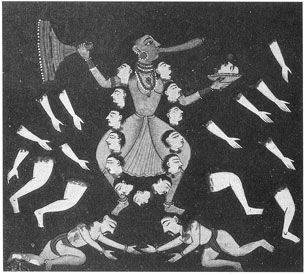
Depictions of Kali portray cognitive dis-integration of the mental body-image as dismemberment, and the sensation of splitting into multiple selves, with each of these sub-selves existing in an isolated time-slice.
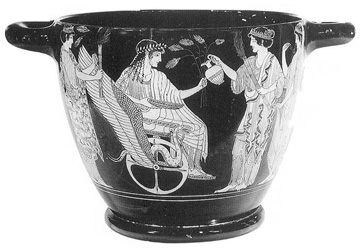
Triptolemus is shown as a charioteer or steersman in a chariot that has wings and is propelled by Heimarmene-snakes, with a large cup of psychoactive mixed wine given to him by the goddess Demeter or Persephone.
Up
Copyright © 2007 Michael Hoffman. All rights reserved.